
Early Years and Founding
The Miami Dolphins' journey began in the mid-1960s, a time filled with enthusiasm for professional football. The vision of owner Joe Robbie, along with his partner, attorney and businessman Danny Thomas, led to the birth of a franchise that would soon capture the hearts of fans. Key highlights of their early years include:
- First General Meeting: The franchise was created in 1965.
- Name Selection: “Dolphins” was chosen from a name-the-team contest, reflecting the vibrant marine life of Miami.
These foundational years set the stage for a remarkable legacy in the NFL.

Establishment of the Miami Dolphins (1965)
In 1965, the Miami Dolphins were officially established, marking a transformative moment for the city and its sports culture. The endeavor began with a vision to create a competitive football team in South Florida, and local sports enthusiasts responded with great enthusiasm. Key details about this establishment include:
- Franchise Model: The Dolphins became one of the eight original teams in the American Football League (AFL).
- Community Involvement: The selection of the dolphins as the team name was a nod to Miami's coastal heritage, chosen through community input.
This foundation allowed the Dolphins to build a strong local fan base, eager for a new sports identity.

Initial Ownership and Leadership Structure
With the Miami Dolphins established, the initial ownership and leadership structure took shape, fostering a foundation for the franchise's growth. Joe Robbie was the primary owner, whose determination and vision were instrumental in driving the team forward. Key components of the leadership structure included:
- Joe Robbie: As the team's main owner, his passion for football and commitment to the community were unparalleled.
- Danny Thomas: Co-owner and partner, contributing his business acumen to guide operational decisions.
This dynamic leadership was critical in navigating the challenges of the early years and building the Dolphins’ promising future.
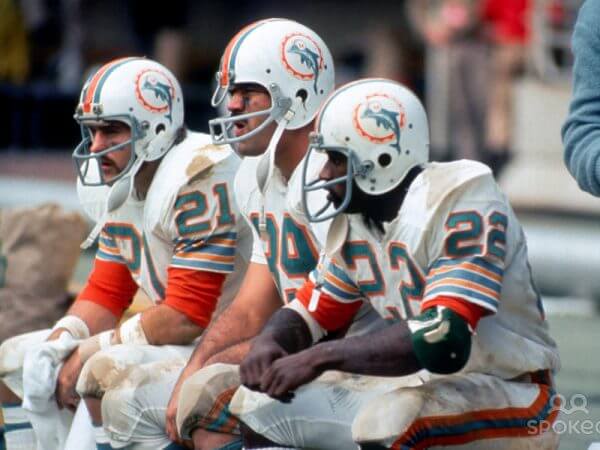
First Season in the American Football League (AFL) (1966)
The Miami Dolphins kicked off their inaugural season in the American Football League (AFL) in 1966, filled with hopes and aspirations. It was a fresh start, and excitement radiated throughout the city as fans welcomed their new team. Highlights of that first season included:
- Record: The Dolphins finished with a 3-11 record, learning valuable lessons in a highly competitive league.
- Home Games: They played at the historic Orange Bowl, where the energy of the fans vibrantly echoed their support.
Despite the challenges, this season laid the groundwork for growth and familiarity as the Dolphins began to forge their identity.
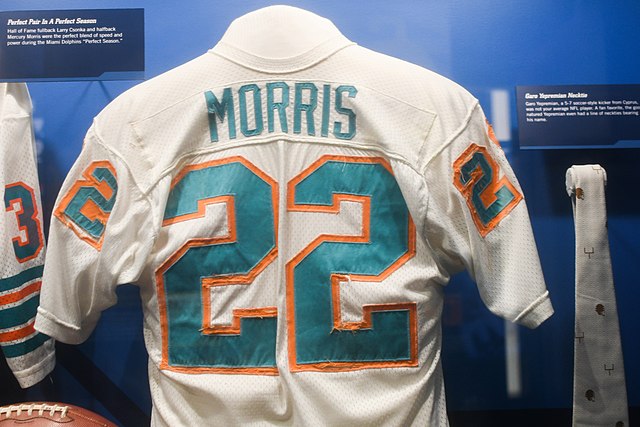
AFL Era and Championship Success
As the Miami Dolphins continued their journey in the AFL, the era became known for both growth and unexpected triumphs. The team began to carve out a competitive niche, exciting fans and creating a storied legacy. Key highlights from this era included:
- Stronger Performance: The Dolphins improved significantly, gaining momentum with each season.
- Championship Runs: By focusing on building talent and team chemistry, they secured their first AFL Championship in 1971.
This period not only solidified the Dolphins’ reputation but also set the stage for future successes that would resonate throughout the NFL.

Joining the NFL after the AFL-NFL Merger (1970)
In 1970, the landscape of professional football transformed when the AFL and NFL merged, ushering in a new era for the Miami Dolphins. This shift was not just a change in league but a significant opportunity for the Dolphins to showcase their talents on a grander stage. Key points from this pivotal moment included:
- Expanded Competition: The Dolphins faced off against established teams, testing their mettle in a more competitive environment.
- Rivalries Developed: Engaging in new rivalries added excitement and intensity to their schedule.
This transition marked an important chapter in the franchise's growth, propelling them toward future glory and greater fan engagement.

First Winning Season and Playoff Appearance (1970)
The 1970 season was a watershed moment for the Miami Dolphins, as they celebrated their first winning season and made their playoff debut. This breakthrough ignited hope and excitement among the fans, solidifying their commitment to the team. Highlights from that memorable season included:
- Record: The Dolphins finished with a respectable 10-4 record, showcasing their growth and competitive spirit.
- Playoff Berth: Their playoff appearance marked a significant milestone, inspiring confidence in the team's direction.
This pivotal year not only laid the foundation for future success but also deepened the bond between the Dolphins and their passionate fanbase.
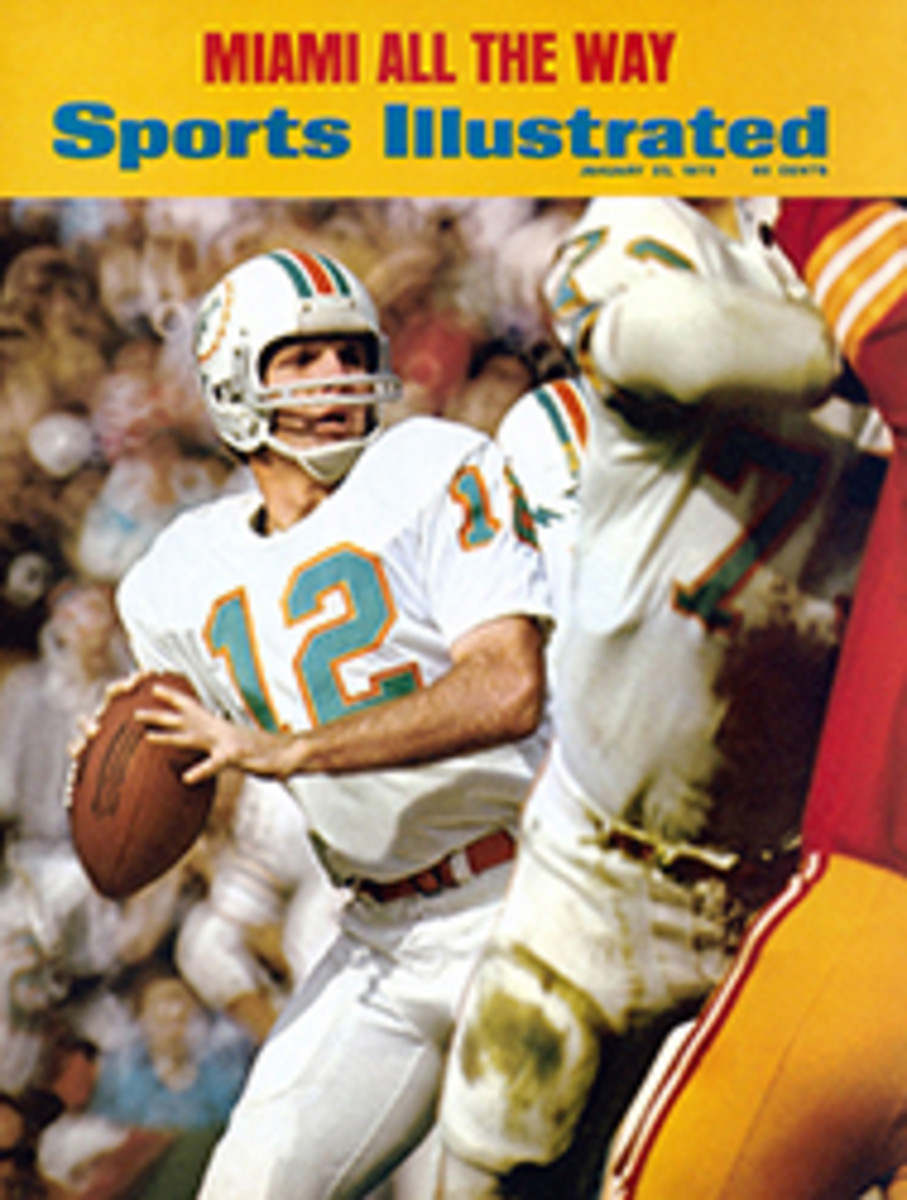
Back-to-back Super Bowl Championships (VII and VIII) (1972, 1973)
The Miami Dolphins achieved an extraordinary feat in NFL history by winning back-to-back Super Bowl Championships, clinching titles in Super Bowl VII and VIII in 1972 and 1973, respectively. These victories not only solidified their place in the league but also endeared them to fans. Key moments from these championships included:
- Super Bowl VII: The Dolphins defeated the Washington Redskins, completing the first perfect season in NFL history with a 17-0 record.
- Super Bowl VIII: Dominating the Minnesota Vikings, the Dolphins showcased their prowess with a decisive 24-7 victory.
These triumphs established the Dolphins as a powerhouse, and the excitement of those seasons continues to resonate with fans today.

Highlighting the Perfect Season in 1972
The 1972 season stands as a monumental achievement for the Miami Dolphins, marking the only perfect season in NFL history. Fans still reminisce about the excitement and pride that filled the air as each game unfolded. Key aspects of this historic season included:
- Unbeaten Record: The Dolphins finished the regular season with a flawless 14-0 record, thrilling fans week after week.
- Diverse Talent: Star players like Bob Griese and Larry Csonka contributed significantly, showcasing a potent mix of skill and teamwork.
This perfect season not only defined the franchise's legacy but also left an indelible mark on sports history, celebrated by fans and players alike.

Key Players During Super Bowl Victories
The Miami Dolphins' Super Bowl victories were powered by a roster of exceptional talent, with key players driving the team's success in both championships. Their contributions were vital, and fans still celebrate their unforgettable performances. Notable players included:
- Bob Griese: The quarterback displayed remarkable poise, effectively managing games and making crucial throws.
- Larry Csonka: A hall of fame running back, Csonka’s powerful running style was instrumental in dominating opposing defenses.
These athletes not only led the Dolphins to victory but etched their names into the annals of football history with their legendary performances.

The Don Shula Era
The arrival of Don Shula as head coach in 1970 marked a transformative period for the Miami Dolphins, ushering in an era characterized by excellence and discipline. Shula's leadership elevated the team's performance and established a winning culture that would resonate for years to come. Key highlights from Shula's tenure included:
- Winning Philosophy: His focus on preparation and strategy set new standards for the team.
- Record Achievements: Under his guidance, the Dolphins became the winningest franchise in NFL history.
Shula's profound impact not only shaped the Dolphins' success but also left a lasting legacy in professional football.
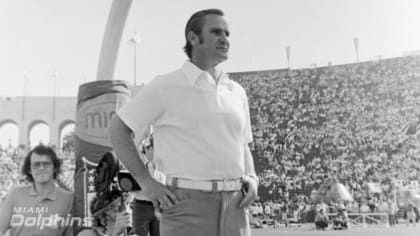
Hiring of Head Coach Don Shula (1970)
In 1970, the Miami Dolphins made a pivotal decision by hiring Don Shula as their head coach, a move that would dramatically reshape the franchise’s future. Shula arrived with an impressive resume and a reputation for winning, bringing a new level of professionalism to the Dolphins. Key points about Shula’s hiring included:
- Immediate Impact: His disciplined approach and emphasis on strategy quickly resonated with players.
- Vision for Success: Shula aimed to build a competitive team capable of contending for championships, and his results spoke volumes.
This hiring marked the beginning of an iconic partnership that would lead the Dolphins to unparalleled heights in the NFL.

Shula's Achievements and Coaching Philosophy
Don Shula's tenure with the Miami Dolphins was marked by numerous achievements that redefined excellence in coaching. His philosophy centered around discipline, preparation, and adaptability, factors that contributed to the team’s success. Key achievements during Shula’s era included:
- Most Wins: He established the record for the most wins by a head coach in NFL history, a testament to his consistent performance.
- Two Super Bowl Titles: Leading the Dolphins to Super Bowl VII and VIII underscored his ability to prepare teams for peak performance.
Shula's unwavering commitment to excellence not only galvanized his players but also left an indelible mark on the franchise's legacy.

Establishing Records for Wins and Playoff Appearances
Under Don Shula’s leadership, the Miami Dolphins became synonymous with success in the NFL, setting remarkable records for wins and playoff appearances that still resonate today. His strategic approach and ability to nurture talent paved the way for consistent performance. Key milestones during Shula's era included:
- Consecutive Playoff Appearances: A streak that brought excitement to fans and solidified the Dolphins as perennial contenders.
- Record Wins: The team's achievements highlighted Shula’s exceptional coaching acumen.
These accomplishments not only brought accolades to the Dolphins but also elevated Shula's status among the greatest coaches in football history.

The 1980s and Competitive Challenges
As the Miami Dolphins entered the 1980s, the decade brought both excitement and fierce competition. While they continued to be a strong presence in the AFC, challenges from rival teams intensified, making it a period of both triumph and struggle. Significant elements of this era included:
- Consistent Playoff Appearances: The Dolphins remained a playoff-bound team, showcasing their resilience.
- Super Bowl Heartbreaks: Unfortunately, they faced tough defeats in Super Bowl XVII and XIX, which tested their resolve.
Despite these challenges, the 1980s laid the groundwork for new stars to emerge and helped shape the team's identity for years to come.

Consistent Playoff Appearances in the 1980s
Throughout the 1980s, the Miami Dolphins maintained their reputation as a powerhouse in the NFL, achieving consistent playoff appearances that thrilled their loyal fan base. This decade showcased the team's persistence and talent, even as challenges loomed. Highlights from this playoff run included:
- Postseason Excitement: The Dolphins reached the playoffs seven times during the decade, demonstrating their competitive spirit.
- Key Performances: Notable players, such as Dan Marino, began to emerge, setting the stage for future success.
These consistent playoff appearances not only kept fans engaged but also reaffirmed the Dolphins' status as formidable contenders in the league.

Super Bowl Losses in Super Bowl XVII (1983) and Super Bowl XIX (1984)
The 1980s were bittersweet for the Miami Dolphins, particularly marked by heartbreaking losses in Super Bowl XVII and Super Bowl XIX. These games represented both the pinnacle of success and moments of despair. Key takeaways from these Super Bowl appearances included:
- Super Bowl XVII: The Dolphins faced the Washington Redskins, falling short with a 27-17 loss after a strong effort.
- Super Bowl XIX: A showdown against the San Francisco 49ers ended with a 38-16 defeat, despite a valiant performance by Dan Marino.
These losses fueled the Dolphins' determination, serving as a reminder of their pursuit for excellence in the years that followed.
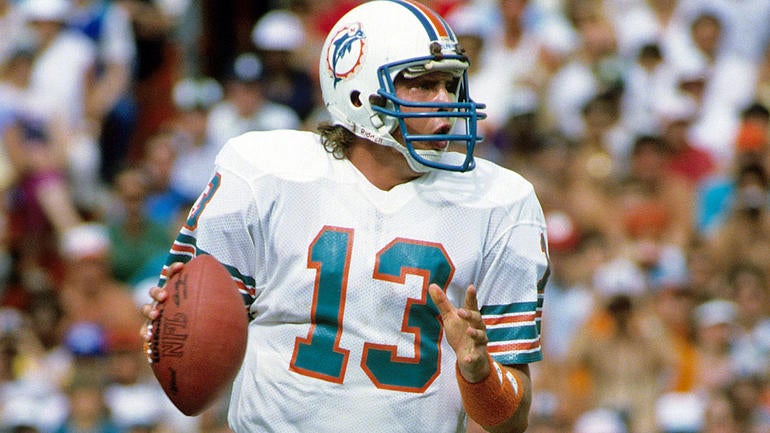
Key Players and Rivalries During This Era
The emergence of Dan Marino as a star quarterback in the 1980s transformed the Miami Dolphins, bringing a dynamic flair to their offensive game. His exceptional talent and leadership inspired both teammates and fans alike. Key elements of this era included:
- Marino's Rise: Known for his quick release and powerful arm, Marino quickly became a franchise staple.
- Intense Rivalries: The Dolphins developed fierce rivalries, particularly with teams like the New England Patriots and Buffalo Bills, creating thrilling matchups.
These key players and rivalries not only defined the Dolphins' identity during the 1980s but also contributed to an exhilarating chapter in NFL history.
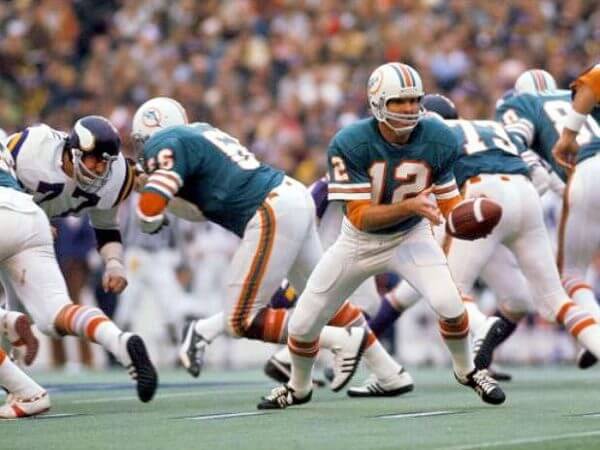
Dan Marino Era
The arrival of Dan Marino in the early 1980s marked a transformative period for the Miami Dolphins, as he quickly became one of the most prolific quarterbacks in NFL history. His unique style and unmatched passing ability captivated fans and redefined the team's offense. Key highlights from the Dan Marino era included:
- Record-Setting Performances: Marino set numerous passing records, including the then-single-season touchdown record with 48 touchdowns in 1984.
- Super Bowl Appearance: His leadership led the Dolphins to Super Bowl XIX in 1985, showcasing his immense talent on the biggest stage.
The Marino era not only solidified his status as a Dolphins legend but also transformed the franchise into a perennial contender.

Drafting of Quarterback Dan Marino (1983)
In 1983, the Miami Dolphins made a defining move by drafting Dan Marino in the first round, 27th overall. This decision would change the franchise's trajectory and lay the groundwork for an exciting era in Dolphins history. Key aspects of Marino's drafting included:
- Lasting Impression: Despite being one of the last quarterbacks chosen in the first round, Marino quickly proved doubters wrong.
- Immediate Impact: He became the starting quarterback within his rookie season, showcasing remarkable poise and talent from the outset.
This pivotal draft pick not only solidified Marino's legacy but also helped elevate the Dolphins to new heights in the league.

Marino's Record-Setting Performances and Accolades
Dan Marino's time with the Miami Dolphins was marked by astonishing record-setting performances that left an indelible mark on the NFL. His unique combination of intelligence, skill, and charisma transformed not only the Dolphins but also the quarterback position itself. Key accomplishments during Marino’s career included:
- Single-Season Touchdown Record: In 1984, Marino set a then-record with 48 touchdowns, showcasing his prolific scoring ability.
- Pro Bowl Selections: He was selected to the Pro Bowl nine times, a testament to his consistency and elite performance.
These accolades etched Marino's name in the history books, solidifying his status as one of the greatest quarterbacks of all time.
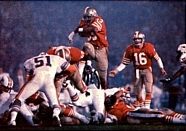
Super Bowl Appearance in Super Bowl XIX (1985)
In 1985, Dan Marino led the Miami Dolphins to Super Bowl XIX, marking a significant milestone in his career and the franchise's history. The anticipation was palpable as fans eagerly awaited the matchup against the San Francisco 49ers, with Marino seeking his first championship ring. Key moments from this Super Bowl included:
- Dramatic Showdown: Despite a strong performance, the Dolphins faced a dominant 49ers team that capitalized on every opportunity.
- Game Outcome: The game ended with a disappointing 38-16 loss for Miami, but Marino's solid play showcased his immense talent on the biggest stage.
Though the Dolphins fell short, this appearance solidified Marino’s status as a rising star in the league.

Rebuilding and Changes
Following the highs of the Marino era, the Miami Dolphins entered a period of rebuilding and change in the 1990s. The transition brought mixed results as the team sought to find a new identity and restore its competitive edge. Key elements of this rebuilding phase included:
- Coaching Changes: A series of coaching changes impacted team dynamics, leading to adjustments in strategies and player roles.
- Player Departures: The loss of key veterans prompted the Dolphins to focus on youth, integrating rookies into the lineup.
Despite the challenges, this era was vital for laying the groundwork for future successes as the Dolphins aimed to reclaim their place among the NFL elite.

Transitioning Coaching Staff in the 1990s
The 1990s were a transformative time for the Miami Dolphins, characterized by frequent transitions within the coaching staff. As the team sought to rekindle its prior glory, these changes aimed to inject new energy and strategies. Key points regarding the coaching transitions included:
- Increased Pressure: Following Super Bowl losses, there was heightened pressure on coaches to develop talent and improve team performance.
- Diverse Philosophies: New coaches brought varied football philosophies, leading to experimental plays and shifts in practice approaches.
These transitions were essential in reshaping the Dolphins' resilience and adaptability, setting the stage for future success amid evolving challenges.

Fluctuations in Team Performance During the Late 1990s
As the Miami Dolphins progressed through the late 1990s, the team experienced noticeable fluctuations in performance, leading to a rollercoaster of emotions for fans. This inconsistency stemmed from a combination of factors, including roster changes and the ongoing search for a solid coaching strategy. Key aspects of this period included:
- Inconsistent Wins: Despite flashes of brilliance, the Dolphins struggled to maintain momentum, resulting in seasons full of ups and downs.
- Injuries: Key injuries to star players further complicated efforts, often leaving the team scrambling to substitute and adapt.
These fluctuations reinforced the need for stability and a cohesive vision, pushing the franchise to reassess its approach as it aimed for resurgence in the coming years.

Notable Injuries and Retirements of Key Players
The late 1990s were marked by significant injuries and retirements of key players, which greatly affected the Miami Dolphins' performance and morale. These challenges contributed to the team’s struggles as they tried to navigate through an uncertain period. Key incidents during this time included:
- Injury Setbacks: Prominent players like Dan Marino faced injuries that limited their effectiveness, creating gaps that were hard to fill.
- Retirements: The retirement of veteran stars impacted team chemistry and leadership, leaving younger players to step up unexpectedly.
These setbacks underscored the importance of depth in the roster and initiated discussions on revitalizing the team’s future direction.

2000s Reforms
Entering the 2000s, the Miami Dolphins recognized the pressing need for reforms to revitalize the franchise and restore its competitive edge. Significant changes aimed at improving performance and reinvigorating the team culture were implemented. Key reforms during this decade included:
- Coaching Overhaul: New head coaches brought fresh perspectives, aiming to develop a cohesive strategy that maximized player talent.
- Draft Focus: Increased emphasis was placed on scouting and drafting young, promising talent to build a strong foundation for the future.
These reforms set the stage for the Dolphins' resurgence, as they sought to reclaim their status as a powerhouse in the NFL.

Coaching Changes and Their Impacts on the Team
The 2000s for the Miami Dolphins were marked by a series of coaching changes, each bringing a unique vision and strategy to the team. These shifts had notable impacts on overall performance and player development as the Dolphins sought stability amid uncertainty. Key points regarding the coaching changes included:
- Philosophical Shifts: Each new coach introduced different offensive and defensive schemes, requiring players to constantly adapt.
- Player Development: Some coaches focused on nurturing young talent, leading to the emergence of future stars.
While these changes brought challenges, they also laid the groundwork for a more cohesive team that aimed to compete at a higher level.

Playoff Appearances and Rebuilding Efforts
As the Miami Dolphins focused on rebuilding throughout the 2000s, their efforts began to pay off with several playoff appearances, igniting hope among fans. These postseason trips reflected the team's gradual progress and renewed determination. Key elements of this phase included:
- Rejuvenated Roster: Strategic drafts and trades brought in new talent, reinvigorating the team’s dynamics.
- Building Chemistry: Increased collaboration among players and coaches helped in developing a cohesive unit.
These playoff appearances affirmed that the Dolphins were on the right path, reinforcing their commitment to long-term success as they navigated the rebuilding process.

Notable Players During This Era (e.g., Ricky Williams, Zach Thomas)
The Dolphins' rebuilding efforts in the 2000s were significantly bolstered by standout players like Ricky Williams and Zach Thomas, both of whom left a lasting impact on the franchise. Key contributions from these players included:
- Ricky Williams: Acquired in a blockbuster trade, Williams brought explosive power to the running game, earning a rushing title in 2002.
- Zach Thomas: A defensive stalwart, Thomas was known for his tenacity and tackling ability, becoming a key leader and making multiple Pro Bowl appearances.
These players not only helped elevate the team’s performance but also embodied the spirit and determination of the Dolphins during their transitional years.

2010s Resurgence and Changes
The 2010s marked a period of resurgence for the Miami Dolphins, as the team made significant strides in rebuilding and reclaiming its competitive edge in the NFL. Under new leadership and a fresh approach, the Dolphins aimed to establish themselves as playoff contenders once again. Key developments during this transformative decade included:
- Coaching Stability: Hiring head coach Adam Gase brought a modern offensive philosophy that energized the team.
- Rookie Talent: A strong influx of young talent, such as quarterback Ryan Tannehill, revitalized the roster and injected hope into the fanbase.
These changes laid the groundwork for a renewed Dolphins identity, setting the stage for future successes.

Coaching Changes and Management Restructuring
As the Miami Dolphins continued their resurgence in the 2010s, coaching changes and management restructuring played crucial roles in shaping the team's direction. These strategic shifts aimed to create a sustainable foundation for long-term success. Key aspects of this restructuring included:
- Coaching Changes: The Dolphins cycled through several coaching decisions that brought in innovative offensive and defensive strategies to foster growth.
- Management Overhaul: New leadership in the front office emphasized analytics and player development, aligning with the modern NFL approach.
This commitment to restructuring helped the Dolphins build a competitive roster, enhancing their chances of success as they moved forward in the league.

Consistency Issues and Development of Young Talent
Despite the Miami Dolphins' resurgence in the 2010s, they faced ongoing consistency issues that hampered their pursuit of a playoff berth. While the team showcased potential, fluctuations in performance became a recurring theme. Key factors during this period included:
- Growing Pains: Young players, including key draft picks, showed flashes of brilliance but often struggled to maintain high levels of performance week after week.
- Leadership Development: Coaches emphasized mentorship for young talents, fostering a culture of improvement and resilience.
Navigating these challenges allowed the Dolphins to identify their strengths and weaknesses, setting the stage for future growth as they aimed for greater success.

Highlights from Seasons (e.g., Playoff Contention in 2016)
The Miami Dolphins experienced notable highlights throughout the 2010s, with the 2016 season standing out as a significant moment of playoff contention. This resurgence reignited the passion of the fanbase and showcased the team's potential. Key highlights from that season included:
- Winning Streak: The Dolphins secured a playoff spot by finishing with a 10-6 record, overcoming early-season struggles.
- Dramatic Comeback: A thrilling victory against the Arizona Cardinals, ending with a last-minute touchdown, invigorated fans and boosted team morale.
This season marked a positive turning point for the franchise, illustrating that perseverance and development were paying off.

Recent Developments and Future
As the Miami Dolphins look to the future, recent developments have sparked renewed optimism among fans and analysts alike. Strategic moves in player acquisitions and coaching staff aim to solidify the team's foundation and propel them into contention. Key developments include:
- Key Acquisitions: The Dolphins made impactful trades and signings, notably adding talent to bolster both offense and defense.
- Coaching Enhancements: The hiring of head coach Mike McDaniel has brought fresh ideas and an innovative approach to the team's strategy.
These steps signal that the Dolphins are committed to building a competitive roster, setting the stage for an exciting era ahead.

Key Acquisitions and Draft Picks in the Late 2010s
In the late 2010s, the Miami Dolphins focused on strategic acquisitions and impactful draft picks to reshape their roster and enhance competitiveness. These moves were crucial in building a future-ready team. Noteworthy elements included:
- Draft Success: Selecting talents like quarterback Tua Tagovailoa in 2020 generated excitement, as fans looked forward to a new era under center.
- Key Signings: Acquiring impactful players through free agency, such as linebacker Kyle Van Noy, bolstered the team’s defensive unit.
These smart acquisitions and draft choices set the foundation for a promising outlook as the Dolphins aimed for success in the years to come.

Changes in Coaching Staff (e.g., Hiring Brian Flores)
The Miami Dolphins made significant strides with changes in their coaching staff, most notably the hiring of Brian Flores in 2019. This pivotal move aimed to bring a fresh perspective and a winning mentality to the franchise. Key aspects of Flores's impact included:
- Defensive Expertise: Coming from the New England Patriots, Flores instilled a strong defensive foundation that transformed the team’s play on that side of the ball.
- Cultural Shift: His emphasis on discipline and accountability resonated with players, fostering a new team culture.
These coaching changes were crucial as the Dolphins sought to build a competitive and resilient roster for the future.

Promising Young Players and Recent Performances
As the Miami Dolphins continue to evolve, a wave of promising young players has emerged, showcasing their talents and potential to lead the franchise into a successful future. Recent performances have highlighted their growth and impact on the team's dynamics. Key players to watch include:
- Tua Tagovailoa: The young quarterback has shown flashes of brilliance, displaying poise and leadership on the field.
- Jaelan Phillips: The rookie linebacker made significant contributions, bolstering the defense and showing immense potential.
These players, along with their recent performances, create a sense of excitement as the Dolphins aim to build a competitive and resilient team for the seasons ahead.

Cultural Impact and Community Engagement
The Miami Dolphins have made significant strides in cultural impact and community engagement, strengthening their bond with fans and the wider community. This connection has become an essential part of the team's identity. Key initiatives include:
- Community Programs: The Dolphins engage in various outreach efforts, such as youth football camps and educational programs, inspiring young athletes and promoting the sport.
- Social Justice Efforts: The team has taken an active stance on social issues, empowering players to voice their opinions and give back to the community.
These efforts not only enhance the Dolphins' brand but also reinforce their commitment to making a positive difference both on and off the field.

The Dolphins’ Role in Miami’s Community
The Miami Dolphins have established themselves as more than just a football team; they are a vital part of the fabric of Miami’s community. Their presence and initiatives have fostered a strong connection with fans and residents alike. Key contributions to the community include:
- Youth Initiatives: Programs focused on youth development and education help inspire the next generation of leaders.
- Local Events: The Dolphins frequently participate in community events, from health fairs to charity drives, demonstrating their commitment to the local population.
Through these efforts, the Dolphins reinforce their role as a community pillar, championing both unity and positive change in Miami.

Charity Initiatives and Social Justice Efforts
The Miami Dolphins are deeply committed to giving back through various charity initiatives and social justice efforts, reflecting their dedication to making a positive impact in the community. These programs not only promote awareness but also empower individuals and families in need. Key initiatives include:
- Dolphins Challenge Cancer: This annual event raises funds for cancer research, engaging players, fans, and the community in the fight against the disease.
- Social Justice Programs: The team actively supports initiatives addressing equality and inclusion, encouraging players to lead dialogues and foster understanding.
Through these efforts, the Dolphins exemplify the importance of leveraging their platform for meaningful change, demonstrating that sports can unify and uplift communities.

Engaging Fans Through Marketing and Entertainment
The Miami Dolphins have embraced innovative marketing and entertainment strategies to engage fans, creating an immersive experience that goes beyond the football field. These efforts have helped solidify the Dolphins' presence in the hearts of Miami's community. Key aspects of fan engagement include:
- Interactive Events: From fan festivals to meet-and-greets with players, these events foster personal connections between the team and their supporters.
- Digital Engagement: The Dolphins leverage social media and apps to keep fans updated and involved, enhancing their experience year-round.
Through these engaging initiatives, the Dolphins not only entertain but also build a loyal fan base, ensuring their excitement for the team remains strong.

Notable Rivalries and Fan Culture
The Miami Dolphins boast a rich history of rivalries that are deeply ingrained in the team’s culture and enhance the passion of their fanbase. These matchups have created unforgettable moments and heightened excitement in the NFL. Key rivalries include:
- New England Patriots: The rivalry intensified in the 2000s, with numerous battles for playoff positions igniting fierce competition.
- Buffalo Bills: Seasonal matchups against the Bills bring out a unique energy, as fans relish the long-standing rivalry.
The Dolphins' fan culture thrives on these rivalries, resulting in vibrant displays of loyalty, camaraderie, and spirited celebrations every game day.

Historic Rivalries (e.g., New England Patriots, New York Jets)
The Miami Dolphins have developed historic rivalries that have defined their legacy in the NFL, with matchups against the New England Patriots and New York Jets standing out. These intense contests not only amplify the excitement of football but also evoke passionate memories for fans. Key aspects of these rivalries include:
- New England Patriots: Competitive clashes in the 2000s escalated tensions, making each game important in the playoff race.
- New York Jets: The Dolphins and Jets have faced off in numerous memorable games, with dramatic moments that leave lasting impressions on both franchises.
These historic rivalries continue to energize fans, turning every encounter into a battle for pride and bragging rights.

Fan Engagement and Loyalty Over the Years
The loyalty of Dolphins fans has been unwavering over the years, creating a passionate and vibrant community that stands by the team through thick and thin. This enduring support is a testament to the strong connection forged between the franchise and its supporters. Key elements of fan engagement include:
- Tailgating Traditions: Game days at Hard Rock Stadium are famous for spirited tailgating, where fans gather to share food, fun, and camaraderie.
- Alumni Involvement: Former players regularly participate in events, fostering a sense of continuity and pride within the fanbase.
These traditions contribute to a rich culture of engagement and loyalty, solidifying the Dolphins' status as an integral part of Miami's identity.

The Impact of the Miami Dolphins’ Brand on the NFL
The Miami Dolphins' brand has left a lasting imprint on the NFL, influencing both the league's culture and its entertainment landscape. Known for their distinctive colors and iconic logo, the Dolphins have cultivated a unique identity that resonates with fans far beyond Miami. Key impacts of their brand include:
- Cultural Significance: The Dolphins' storied past, including their perfect season, has become part of NFL lore, inspiring generations of players and fans.
- Marketability: Their presence in a vibrant city like Miami enhances the franchise's appeal, contributing to the broader NFL brand.
Through innovative marketing, community involvement, and a commitment to excellence, the Dolphins have played a vital role in shaping the NFL's narrative and fostering a sense of national pride among fans.

Conclusion
In conclusion, the Miami Dolphins have forged a rich and dynamic legacy within the NFL, characterized by historic rivalries, dedicated fan engagement, and a commitment to community involvement. Their brand stands as a powerful symbol of Miami's spirit and resilience. Key takeaways include:
- Cultural Impact: The Dolphins continue to influence the league and the community with their charitable initiatives and social justice efforts.
- Future Potential: With a promising roster and strong leadership, the Dolphins are poised for greater success ahead.
As the franchise moves forward, the journey of the Miami Dolphins remains a captivating story of hope and perseverance, capturing the hearts of fans everywhere.

Summary of Key Moments in Miami Dolphins History
The history of the Miami Dolphins is filled with pivotal moments that define the franchise's legacy and impact on the NFL. Each chapter showcases the team's resilience and spirit. Notable moments include:
- The Perfect Season (1972): The Dolphins became the first team in NFL history to finish a season undefeated, an achievement that still resonates today.
- Back-to-Back Super Bowl Championships (1972, 1973): Winning Super Bowls VII and VIII solidified their place among the greats of the game.
These key moments not only illustrate the Dolphins' greatness but also provide a rich narrative that continues to inspire fans and players alike.

Reflection on the Team's Legacy and Impact on the NFL
Reflecting on the Miami Dolphins' legacy reveals a profound impact on both the NFL and the community. Their journey through triumphs and challenges has shaped the league's narrative and inspired countless fans and players. Key aspects of their legacy include:
- Innovative Play: The Dolphins pioneered strategies that redefined football, influencing future generations of teams.
- Cultural Symbol: The franchise represents Miami's vibrant spirit and resilience, creating a strong connection with the community.
As the Dolphins move forward, their storied history will continue to serve as a motivator and an integral part of the NFL's rich tapestry.

Speculation on the Future Direction of the Franchise
As the Miami Dolphins look ahead, speculation about the future direction of the franchise remains vibrant and filled with potential. With a strong foundation in place, the team appears poised for growth and success in the coming seasons. Possible future trajectories include:
- Continued Player Development: Focusing on nurturing young talent like Tua Tagovailoa could lead to significant improvements on the field.
- Strategic Acquisitions: The Dolphins may look to bolster their roster through free agency or trades, aiming for immediate impact players.
With an active front office and a dedicated coaching staff, the Dolphins could swiftly return to playoff contention, revitalizing their storied legacy in the NFL.



